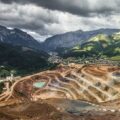One of the benefits of land ownership is that you have absolute control over the land and can do whatever you please with it.
However, have you ever considered what happens below the surface estate? Does your property deed allow you to do whatever you please with underground resources beneath the land? There are two types of property ownership, namely mineral ownership and surface rights zone ownership. We’re going to be talking about surface rights. In contrast to mineral rights, surface rights are the rights to the surface area of the land.
The ownership of surface rights includes any physical structures on the land and the rights to utilize above-ground resources such as trees, plants, water resources or farm the land. If you wish to install a septic tank, for example, you can dig down to make the installation. But such rights do not grant you permission for accessing subsurface resources.
In the case of surface rights, you can legally transfer or sell the title, But you can’t lease or sell land to any gas or oil companies or mining companies for extraction or exploration. These rights are not legally yours. As a surface rights owner, you will have to stand by the local land use act and building laws. Aside from that, you can do whatever you want to do with any of the physical structures on the land.
What Are Considered Surface Rights and What Do They Include?
As the name indicates, it is the right to all the physical properties above ground on the land.
A surface rights holder can exploit all the resources on the land surface. These may include buildings, dwellings, farming of all sorts, digging to a certain depth for construction of wells, septic tanks, or underground storage tanks.
The landowner rights are limited to the resources above the land. The holder may sell the rights to the property to another person. But not to an oil and gas company except if you own both the mineral and surface rights. Because unless you own both rights, you are not entitled to the mineral resources below the land.
If you are a mineral rights holder and want to sell the mineral rights or enter into an oil and gas lease, a small area of the surface rights is often part of the deal. With this, the oil and gas company can set up a workstation for outdoor storage areas, drilling rigs, containment ponds, fences, roads, and water treatment facilities needed to extract oil, natural gas, or other minerals.
What Is the Depth of Surface Rights?
Before you get a landed property, it is important to note the limits to what you own and what you do not. In some countries, land ownership gives you both the surface and mineral rights to that land. However, in some states or countries, you are only given the rights to the surface area of the land. The government or someone else may own the mineral rights.
In other words, at any time, an oil and gas company may come and start drilling the ground to source minerals and gas. Hence, the question regarding the extent of rights as a landowner? Aside from the surface rights like the house, air, pore spaces, plants, and so on, surface rights also include the right to a certain depth of the soil where you can drill for the construction of wells and septic tanks.
You cannot lease the land to oil and gas companies or participate in surface extractive activities. Instead, such activities are the domain of the person who holds the mineral rights for the land.
What Is the Difference Between Surface and Mineral Rights?
Mineral Rights include ownership of all minerals underneath the land. It involves the right to resources, minerals, oil and gas, and other things underneath the soil. A property owner with mineral rights may explore, extract, and sell natural deposits found underneath the land surface. But surface rights only refer to exclusive rights to all physical property on the land.
What Can Be the Different Reasons for Conflict Between Land Surface Rights and Mineral Rights Owners?
In many states where mineral rights deposits are abundant, landowners’ rights are divided into two distinct parts. Louisiana, Colorado, Oklahoma, New Mexico, Texas, and Pennsylvania are examples.
Therefore, you may own whatever is on the land but not underneath it.
Consider a situation where the two rights belong to different people. At any point in time, the mineral estate owner may come with an oil or gas company and start drilling for oil and gas. This action would affect the structure above the ground.
Or consider a scenario when surface owners start drilling below the legal level they should or lease or sell the property to an oil and gas company. This is where the legal ownership of mineral rights and surface rights overlap, a common cause of conflict between mineral owners and landowners.
How To Protect Your Property from the Surface Damages that Oil and Gas Companies May Cause
Your land may suffer damage when an oil company or mining company tries to extract minerals. As a land owner, you should negotiate a payment that will compensate you as a rights holder. The compensation payment should cover current and future losses. It is important to remember that exercising mineral rights on your land may result in surface damage issues.
If you hold both mineral rights and surface rights, try to include protective provisions in your oil or gas lease. If you do not own both sets of mineral rights, you will have to negotiate a compensation package with the state. The best way to avoid damage to your mineral estate is by negotiating some damage clauses with whichever company has the right to drill or with the mineral rights holder.
- No Surface Operation – The land owner may have the power to stop specific actions from happening on his or her property. The effectiveness of this clause will depend on the requirements of the lessee. You should talk to your leasing agent if you are interested in such a clause.
- Surface Damage – Payment Rights owners who use their land for crops, timber, or pasture should be compensated for the altered productive capacity they would have benefited from.
- Location Approval – It is common to use this on larger plots of land. The rights owner and lessee must agree on the drill sites, pipeline easements, access roads, etc. Lesser tracts of land present more of a challenge since lessees typically choose based on geologist recommendations.
- Water-related Clauses – The purpose of this clause is to protect the owner of the rights and his or her water. The drilling operations and extraction process for oil and gas can affect subsurface water. Groundwater is often tested by oil and gas companies before and after drilling. In the event of water contamination, efforts will be made to fix the problem by the oil company or mineral owner.
- No drilling within X Feet – Essentially, this is the same as the location approval clause. A surface and mineral rights owner may use this clause if they don’t want a pipeline, well, road, or other mineral-related facility constructed near their property.
As a Surface Rights Owner, is it Possible to Limit Surface Operations?
You can limit access to the surface of your property as a surface owner. You can decide what you need or don’t need on the land surface. However, you cannot use this clause in all situations. It will depend on the caliber of the leasing company and their needs.
Conclusion
The above is the necessary information about surface rights to a property. If you’re interested in purchasing land, you should consider getting a property with both surface and mineral rights.
That way, it gives you full power over the property, and you can set the limits you need as you allow others to use the land. Pheasant Energy is a trusted broker that can help with buying mineral rights or finding mineral rights with more than 70 years of experience.
FAQs
1. Do surface rights include water rights?
Yes, surface rights apply to everything within the surface, including water rights according to local ordinances and laws.
2. Does a landowner own the minerals under the surface?
There are no ownership rights to mineral rights, such as oil, gas, or minerals, for a landowner.




Leave a Reply